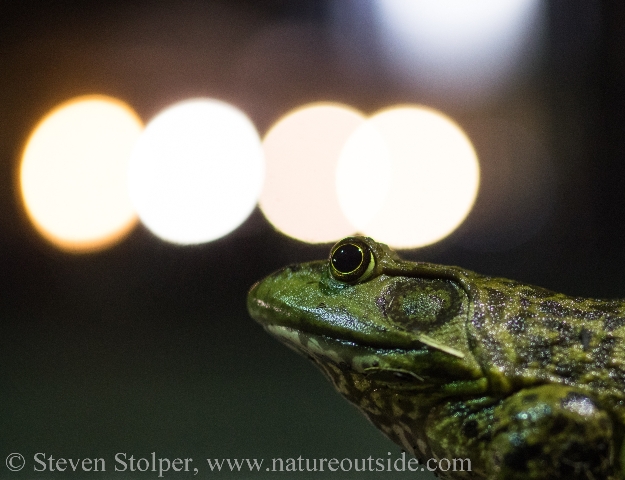
Photo by Eliot Drake.
Your bushcraft skills travel wherever you go. They don’t remain in the woods when you leave.
But few of us make use of our skills when we are in an urban environment. And we’re missing some good stuff!
In past articles, I’ve talked about small things you can do to bring bushcraft into your home. There are many fun bushcraft projects you can do around the house to challenge your creativity and skill.
On this occasion, I want to point out how you can use bushcraft to enjoy your urban experience. There are interesting animals to observe, and even track, just outside your front door. Any time you want, a safari awaits. Just use your imagination… and bushcraft!
The Gifts of your Neighborhood
If you are reading this in the United States, you most likely live in an urban area. At least that’s what the statistics say. In 2010, the time of the last census, more than 80 percent of Americans lived in urban areas.
So it seems sensible to use our bushcraft skills “in town.” Otherwise, we only exercise them when we “go to the woods.” Think of bushcraft skills as a superpower. If you had an amazing superhuman power, would you turn it off when you leave the woods?
Using our bushcraft superpowers, we can change the way we look at urban environments. We can begin to appreciate the gifts of our neighborhood.
Mindfulness
The secret is mindfulness – noticing the world around us. Increased awareness lets you use your bushcraft knowledge to see the world anew. You always want to be present for your life. And noticing the nature around you in an urban environment is a great start. We live in an unprecedented sea of connectivity. Choose to connect with nature wherever you are.
Nature Finds A Way
Let me give an example of how you can use awareness to practice bushcraft in an urban environment.
Eliot works in a nondescript office park less than a mile from the San Francisco Bay. Cookie cutter bland office fronts advertise a mix of light industry, tax accountants, real estate agents, and small computer companies. Not a particularly exotic environment.
The only break in the concrete landscape is a construction site next door. Soon another budget hotel will see the light of day.
At the edge of the office park the terrain dips suddenly. A shallow basin catches rainwater to become a seasonal pond for much of the year. Cattails, Tule and the usual marsh plants fight to maintain a foothold between the water and concrete. It’s the only reminder that this area was once a vast tidal wetland inhabited by the Ohlone Peoples. The pond stands alone against the overwhelming wave of concrete.
Menace in the Night
Eliot strolls out of the office after dark – yet another long day. As he walks across the parking lot, Eliot’s mindfulness transforms this commonplace occurrence into a noteworthy event.
Eliot is not a bushcrafter. But he is an amazing photographer. Not only does he have the photographer’s eye for composition, he has an uncanny ability to recognize a photo opportunity.
And this is what he saw… Lithobates catesbeianus – the American Bullfrog!
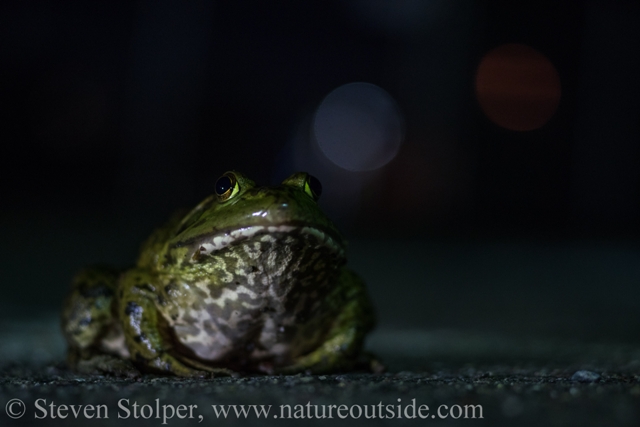
American bullfrogs are alien species introduced into California for food. They are not native west of the Rockies. Photo by Eliot Drake.
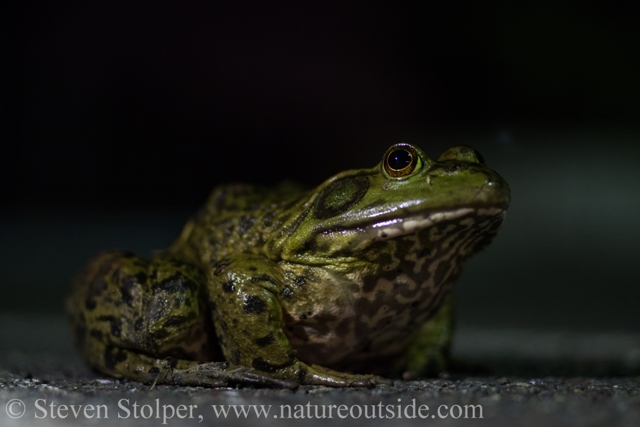
Male American bullfrog. Males have tympanums (the round eardrum behind the eye) as large or larger than their eyes. Females’ tympanums are not as large as their eyes. Photo by Eliot Drake.
Eliot did three things right. He noticed, observed, and acted. These are the things we must do to bring our bushcraft to bear.
Notice – Notice plants, animals, and natural resources in your area. Cultivate awareness.
Observe – Take the time to observe the plants and animals you notice. Stop your hectic life and be present. Ask yourself questions as you observe. Try to find the answers later on.
Act – Take photos, take notes, ask questions and answer them later. Turn your observation into new knowledge.
Few of us have Eliot’s skill with a camera. But that doesn’t mean we shouldn’t take photos. You can use the photos to identify plants and animals and learn more about them.
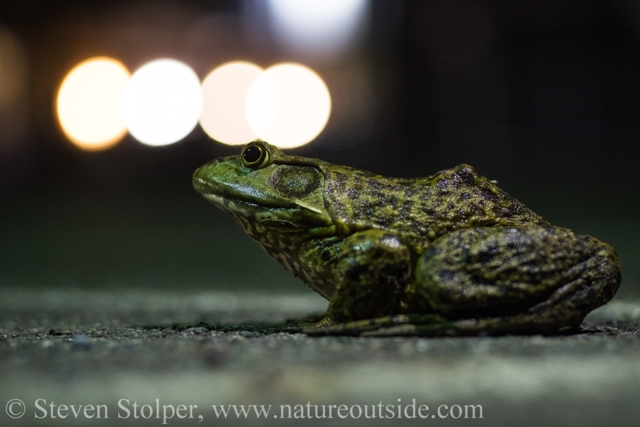
The bullfrog is the largest frog in North America. Its body measures 3.5 – 8 inches (8.7 – 20 cm). Photo by Eliot Drake.
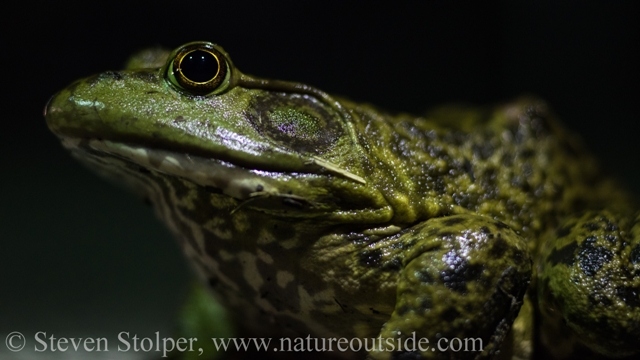
This invader has a voracious appetite. It is probably responsible for the decline of many native California species including frogs (the endangered Red-legged frog), turtles, snakes, and waterfowl. Photo by Eliot Drake.
Unlock your Capacity to Wonder
Mindfulness turns even commonplace life into noteworthy events. The trick is to notice, observe, and act. You will be amazed what you discover. Nature is everywhere, even in our urban settings.
Use your powers of observation to unlock your capacity to wonder. Engage with nature on your doorstep to exercise your bushcraft superpowers.
What is the most interesting nature you have seen in an urban setting? Tell me about it by leaving a comment below.
Related Articles on NatureOutside
Acorn Woodpecker – This Bird is Nuts! (Video)
Mountain Kingsnake – Beauty and Danger!
For fun facts and useful tips, join the free Bushcraft Newsletter.



Thanks for interesting article on Urban Bushcraft. I see interesting things while driving on LA freeways. I see numerous green weeds pushing their way up through cracks at the edge of the highway paving. Life will find a way!
I see wild sunflowers growing profusely, just like Vincent’s in the South of France.
I’m glad you enjoyed the article, Carol! I often notice interesting things while driving on I-5, between Los Angeles and San Francisco. I see barn swallows nesting under highway underpasses and birds of prey patrolling farmers’ fields. I agree, life will find a way!
nice article Steve. an encouragement to people who are ‘townies”. acorn flour not withstanding. just kidding of course!
Haha! 🙂 I’m glad you enjoyed the article, Scott.